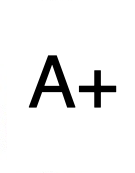What are gerunds and infinitives?
What is the difference between gerunds and infinitives?
A gerund is a verbal noun which ends in “ing,” while the infinitive consists of “to” and the base form of the verb.
Some verbs always take an infinitive (to + verb) and some always take a gerund (the -ing form). However, some will take either.
Infinitives are like prepositions – You simply have to learn which form is used in which situation.
In other words, there are no grammatical rules like we see for verb tenses, for example, to explain the usage of infinitives and gerunds.
Infinitive examples:
Sarah decided to go out.
He agreed to pay half the cost.
She refused to wait.
The man had chosen not to buy a ticket.
Gerund examples:
Sarah suggested going out.
He recommended paying half the cost.
I practice playing the piano.
Gerunds and infinitives – Exercise
Instructions: Complete the following sentences using either the gerund or infinitive form of the verb provided.
1) As your manager, my job is checking (see) that you carry out your responsibilities.
2) The pianist is paid (play) music for the customers.
3) I have been thinking about (visit) my Grandma on Memorial Day.
4) She really enjoys (swim) in the summer.
5) It’s time (pack) our things and head home.
6) There’s no reason (cry) over spilled milk.
7) I’m really tired of (hear) him complain all the time.
8) Have you ever considered (cut) your hair short?
9) I hope (win) the lottery and live in France someday.
10) All passengers must prepare for (land) by fastening their seat belts.
Gerunds and infinitives exercise – answers
1) to see
2) to play
3) visiting
4) swimming
5) to pack
6) to cry
7) hearing
8) cutting
9) to win
10) landing
